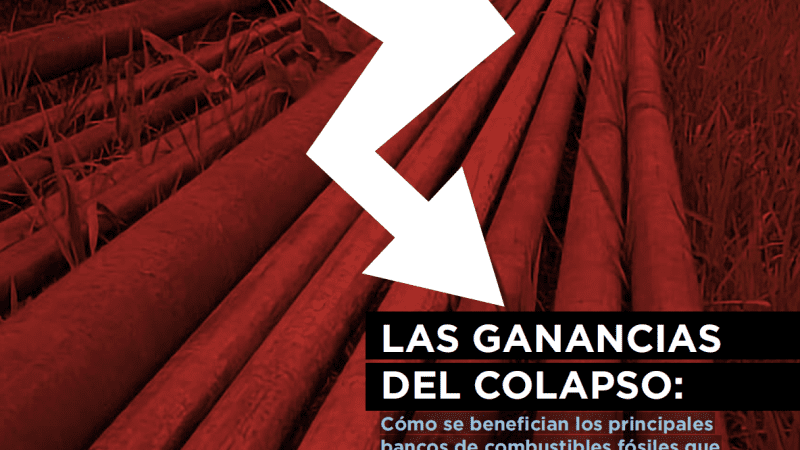Progress, but not enough to show for it. Fashion emissions pathways still off track for 1.5C

By making public commitments and taking meaningful action within their supply chains to transition to renewable energy and phase out coal, fashion brands can not only meet their own climate responsibilities but can catalyze a wider shift to clean renewable energy that supports a fair and fast energy transition.
At COP26 in Glasgow two years ago, signatories of the UN Fashion Charter for Climate Action recommitted themselves to take meaningful action to keep global heating below 1.5C. This commitment included halving their emissions by 2030 against a 2018 baseline or setting an equivalent target with the Science Based Targets Initiative (SBTi).
Two years later, signatories and conveners of the UN Fashion Charter for Climate Action are meeting at COP28 in Dubai to discuss the industry’s progress and challenges in its pathway to decarbonization.
Brands that are signatories of the UN Fashion Charter for Climate Action should represent the high bar for climate leadership in the sector. In this analysis, we assess fourteen of these major global brands in the subsectors of fast fashion, luxury and athletic/outdoor against that 50% emissions reduction benchmark, to see which are on track to meet their climate responsibilities, and which are still heading in the wrong direction.
Key Findings:
- Despite progress, most fashion brands are still not on track to meet the 1.5C pathway or their commitments to the UN Fashion Charter.
Nine out of the 14 fashion brands (Kering, Ralph Lauren, Nike, PUMA, Fast Retailing, Gap, Levi’s, H&M, Inditex) reported an overall decline in emissions from 2018/2019 to the end of 2022. However, if the current five-year trajectory continues to 2030, only Levi’s, Kering, Ralph Lauren and Gap are projected to reduce emissions enough to meet or exceed their commitments to keep warming under 1.5C. The remaining nine brands will fail unless serious action is taken in their supply chains to phase out fossil fuels and transition to renewable energy.
- Most brands’ emissions increased again in 2022, casting doubt on fossil fuel phase-out prioritization.
In the past two years (2021 and 2022), reported manufacturing emissions rose sharply among many brands, casting doubt on long-term emissions reduction targets. 11 fashion brands increased emissions between 2021 and 2022: Chanel, Kering, LVMH, Ralph Lauren, adidas, VF Corp, lululemon, PUMA, Fast Retailing, Gap, Inditex, with double-digit increases reported by adidas (11%), VF Corp (19%), lululemon (10%), Chanel (41%), LVMH (10%) and Ralph Lauren (13%).
- Only H&M, Levi’s and Nike showed a reduction in emissions for the past two years
Continued emissions reductions from the giant flagship brands, while others continue to climb following their COVID-19 recovery, suggest that climate action is beginning to bear fruit. Now they need to be less shy and show us exactly how it happened – more transparency around practices will push up the leadership bar.
- Fast fashion brands are outperforming luxury and athletic/outdoor brands in decarbonization
Perhaps surprisingly, of the three subsectors, fast fashion brands showed the most steady overall progress towards emissions reduction, while luxury and athletic or outdoor brands showed the most dramatic short and long-term changes. This is despite public statements made by LVMH’s Antoine Arnault that the nature of their pricey products is “sustainable by nature,” and can’t be compared with fast fashion.
Chanel, LVMH and lululemon are all travelling dangerously in the wrong direction, having actually increased their manufacturing emissions above their baseline year of 2019, indicating that these luxury and athleisure icons must act quickly to prioritize people and the planet over their profits.
How did the brands stack up?

Check out Stand.earth’s 2023 Fossil Free Fashion Scorecard for recommendations on how each brand can be a climate leader and support a global clean energy transition.
Responsible climate action: Ensuring a rapid and fair phase out of fossil fuels that avoids false solutions
Comprehensive research has shown the essential role of clean, renewable energy in meeting emissions targets. A recent case study by the European Outdoor Group found that “potentially almost three-quarters of all emissions [at manufacturing facilities] are from fossil fuels,” and therefore that two-thirds of the emissions reduction potential available “relates to coal phase-out and switching to renewable electricity.” An investigation by the Aii and WRI also found that transitioning fashion supply chains to renewable electricity could reduce the sector’s total emissions by as much as 28%.
As signatories of the UN Fashion Charter for Climate Action, each of these fashion companies has committed to phase out on-site coal by 2030 at the latest, while H&M, PUMA, and adidas have brought forward a public target of being coal-free in factories by 2025.
H&M, Kering, and PUMA have set public targets to transition some or all of their supply chains to renewable electricity. While all of these brands have a long way to go to cut emissions, by setting meaningful time-bound targets they are sending an important signal to the industry that a clean energy transition is coming – and soon.
However, how the fossil fuel phase out happens is important. The hard work of reducing emissions and phasing out fossil fuels will be done both at the manufacturer level, mostly in countries in the Global South, but that doesn’t let brands off the hook. To ensure that the energy transition is both rapid and fair, it needs to be undertaken through shared actions, including by brands. Brands need to be stepping in with more than just a demand list; direct investment or financial support is key to supporting manufacturers to make the energy transition without adding even more undue burden. Signing long term contracts, negotiating on decent terms and communicating equally with supplier companies and workers is key to making the transition fair and equitable for all. And to be clear and accountable, this information must all be openly disclosed in published decarbonization pathways.
A fair transition to clean energy must also avoid false solutions – such as burning biomass (including rice husks, wood pellets or other “waste”) instead of coal.
Burning biomass in boilers is a false solution because although it is considered to be a low-carbon fuel source, in reality, it can produce more emissions than coal. Biomass burning can still cause significant harm to workers and communities near factories, by increasing air pollution, increasing deforestation or impacting traditional food, land or energy sources. Concerningly, H&M, Inditex, Fast Retailing, PUMA, Nike and Gap were all found to promote or use biomass as a supposedly sustainable alternative to coal.
As leaders gather at COP28 to agree on the global need to increase renewables, phase out fossil fuels – especially coal – and support a fair energy transition, the fashion industry needs to move with it. Fashion’s global brands must act now to move beyond promises and transition their manufacturing off fossil fuels, and onto clean, renewable energy.
Methodology:
- The emissions analysis was limited to fashion companies that:
- signed the United Nations Fashion Industry Charter for Climate Action;
- were included in Stand.earth’s 2023 Fossil Free Fashion Scorecard;
- reported an annual revenue of $4 billion US or greater in 2022; and,
- disclosed supply chain emissions data (Scope 3 Category 1) for the years 2019 to 2022.
- And limited to consumer-facing IT brands that:
- were assessed in the 2022 Supply Change Scorecard Report
- Reported their Purchased Goods and Services emissions between 2019 and 2022
- Actual supply chain emissions used in the analysis were obtained from purchased goods and services data reported by companies in their sustainability or annual reports or in their responses to the CDP (formerly the Carbon Disclosure Project).
- Projected emissions were calculated using a line of best fit for the available data from 2018-2022 or 2019-2022 where available, and a one-year average of emissions change from 2021-2022.



